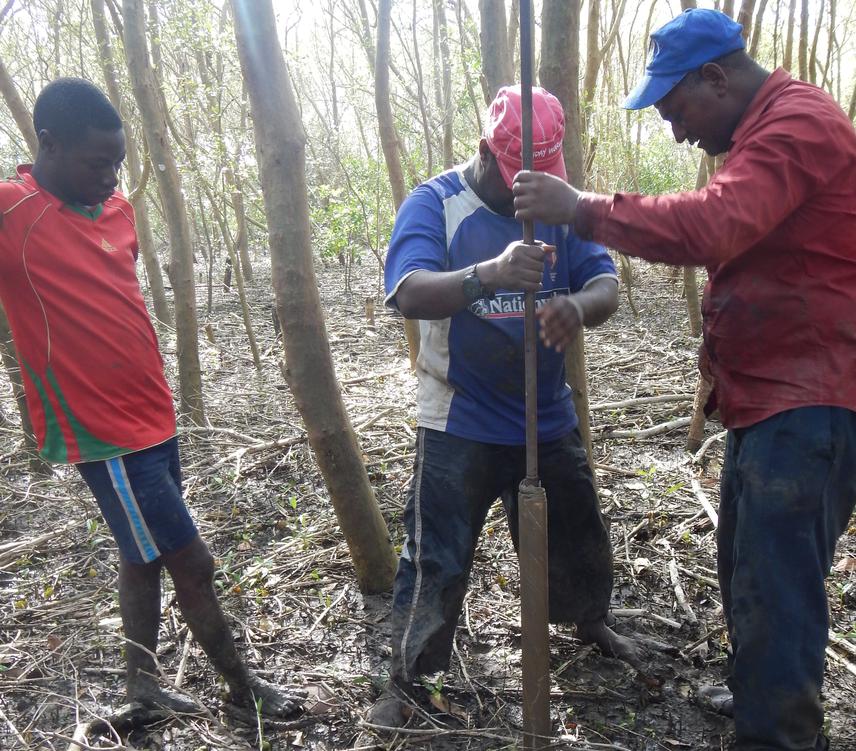Mwita Marwa Mangora
The aim is to establish how different management regimes on mangrove forests safeguard biodiversity, ecological integrity and ecosystem services for improved livelihoods and harmonized nature.
Mangroves forests in Tanzania represent about 0.3% of the total forest area but they offer substantial goods and services to dependent coastal communities. They are listed as forest reserves by law which imposes restrictions on access and utilization, but this is rarely effectively enforced. There is therefore a tacit perception that local villagers have traditional rights to use mangrove forests at their discretion. The only mangrove forest that is under strict non-consumptive protection is in Wami estuary within Saadani National Park (SANAPA) since its establishment in 2005. Contrary, the neighbouring Ruvu estuary mangroves which have similar geomorphological setting but due to its implicit open access are vulnerable to over-exploitation.

Retrieve sediment core.
The two mangrove systems are known to support rich biodiversity, wood resources and significant shrimping and fishing activities. As such where protective enforcement takes its course there often emerges a socio-ecological controversy that protectionism for biodiversity and ecological excellence is attained at the expense of local livelihoods. But, it is also recognized that over-exploitation leads to biodiversity loss and disruption of the flow of ecosystem services, weakening dependent livelihoods. Because mangrove are also known to be highly non-linear ecosystems that exhibit large spatial and temporal variations in their structure, composition, functions, processes and services, the impacts of mangrove loss are thus disproportionate at local scales. It is important that these contrasting revelations are assessed and substantiated as mangroves now receive global attention for conservation especially because of their demonstrated high rates of productivity and carbon sequestration. Studies on mangrove carbon pools are particularly rare if not absent in Tanzania.
This project therefore aims to assess and subsequently monitor biodiversity, ecological status and ecosystem services therein in two mangrove forests of Wami and Ruvu estuaries subjected to contrasting protectionism and public access management regimes respectively. This will be done through establishment and use of permanent sampling plots (PSPs) to characterize forest structure, determine biomass and carbon pools over time, and how these are translated into the flow of ecosystem services for improved livelihoods as well as harmonizing with nature. The project will likely demonstrate how leakages of non-consumptive protection offsets short term benefits from mangrove harvesting and conversion for other land uses. The project will also gather baseline information particularly from Saadani National Park as important reference levels for restoration initiatives that require reference sites to ascertain levels of ecological success of restored sites.